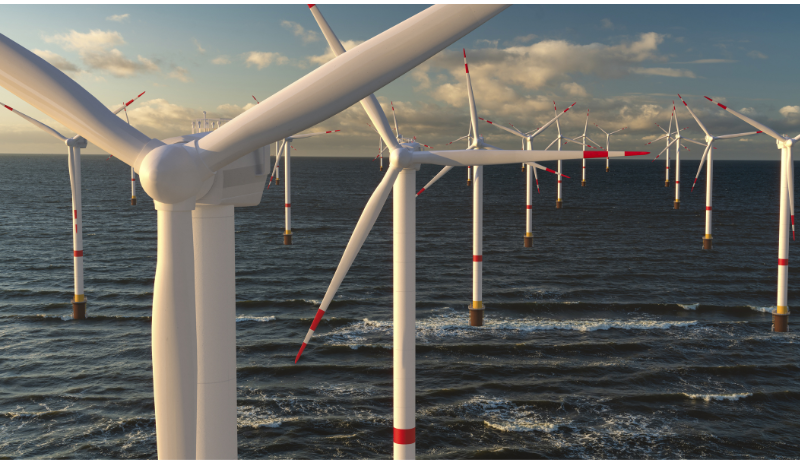On Thursday, June 12, 2025, the European Parliament’s Think Tank published a study on the role of Direct Air Capture (DAC) technologies in supporting the European Union’s climate objectives. This report complements the European Commission's 2040 Climate Target announced in February 2024, which sets a goal of a 90% net reduction in greenhouse gas emissions by 2040 relative to 1990 levels) by assessing costs, technological pathways, and policy frameworks. It also provides a set of strategic recommendations for DAC deployment across the EU.
The study highlights three key priorities: the need for strong EU policy support, scaled-up investment in research, infrastructure, and enterprises, and the imperative to prioritize emissions reductions while using removals as a complementary measure.
DAC Technologies & EU Climate Targets
Direct Air Capture (DAC) technologies capture CO2 directly from the atmosphere, using two primary methods: solid-DAC (S-DAC) and liquid-DAC (L-DAC). S-DAC is highly modular and utilizes low-temperature heat, making it adaptable and easier to develop technologically. L-DAC uses established industrial processes, enabling greater scalability. However, both systems have substantial energy and water demands.
When coupled with geological storage or mineralisation, DAC provides permanent carbon removals, known as Direct Air Carbon Capture and Storage (DACCS). DACCS offers robust monitoring capabilities, durable storage potential, and requires minimal land use.
Under the EU’s Industrial Carbon Management (ICM) strategy, up to 280 million tonnes of CO₂ annually must be captured by 2040 to align with the EU’s 2050 climate neutrality objectives. DACCS is expected to account for 40 to 60 million tonnes annually, comparable to the annual emissions from the U.S. domestic aviation sector.
Cost: The Primary Barrier
The report identifies cost as the primary obstacle to DAC technology adoption. Median costs for first-of-a-kind L-DAC facilities range from €360 to €640 per ton, and between €1230 and €1480 per tonne for S-DAC. Broader estimates place costs between €200-900 for L-DAC and €600-2,400 for S-DAC.
Future cost reductions may be achieved through economies of scale, technological advancements, and targeted policy interventions. The study estimates potential median ranges for Nth-of-a-kind plants to be €210-330 for L-DAC and €100-1200 for S-DAC.. However, limited techno-economic data and the risks associated with early-stage projects contribute to high uncertainty. Additionally, elevated energy consumption and reliance on solvents, sorbents, and critical raw materials are major cost drivers. By comparison, premium nature-based carbon credits, such as ARR and Blue Carbon, currently trade for up to $50 per tonne.
Infrastructure and Investment Challenges
Achieving the EU’s DACCS target of 40 million tonnes per year by 2040 requires significant financial commitment. The overall yearly cost to generate such an amount of credits is estimated to be between €12 and €24 billion euros (depending on technological advancements).
Additionally, the Joint Research Centre estimates that building the necessary CO₂ transport and storage infrastructure, including that required for fossil-based Carbon Capture and Storage, could cost between €9.3 and €23.1 billion by 2050.
Despite its potential, DACCS scalability at industrial levels remains unproven, posing considerable investment risk. Meeting broader EU removal targets will necessitate increasing annual storage capacity from 50 million tonnes by 2030 to 250 million tonnes by 2050, incorporating CCS, BECCS (Bioenergy with Carbon Capture and Storage), and DACCS.
Avoiding Over-Reliance on DACCS
The report strongly cautions against treating DACCS and other carbon removal methods as substitutes for immediate emissions reductions. Maintaining a primary focus on direct emission reduction strategies remains essential, particularly to avoid the risk of overshooting EU targets due to uncertainties surrounding the scalability of DACCS.
Every removal approach, from nature-based to engineered solutions, comes with constraints and tradeoffs. As an example, BECCS (Bioenergy with Carbon Capture and Storage) is constrained by the availability of sustainable biomass. Therefore, a balanced portfolio of diverse solutions is imperative to sustainably manage environmental impacts.
Policy Recommendations
To meet the European Commission's 2040 Climate Target, the report calls for:
- Clear and consistent policies with binding targets for both reductions and permanent removals. DACCS must be clearly recognized as a legitimate solution in order to provide certainty for investors.
- Mandatory carbon removal credits purchases, and/or integration of DACCS (and potentially BECCS) into the EU Emissions Trading System (EU ETS). This would create stable and predictable demand, once again providing stability for investors.
- Adoption of a regulatory framework centralized at the EU level, following the Net-Zero Industry Act. This would streamline permitting and reduce administrative burden, simplifying issues like inadequate funding, competitive application processes and lengthy approval times.
- Stronger support for R&D for DAC and DACCS through funding streams such as Horizon Europe to drive down costs. The technologies should have dedicated funding streams instead of blending them with other technologies to ensure targeted support.
- Strategic placement of DACCS in “net-zero valleys”. Co-locating of DACCS facilities near geological sites would minimize transport costs and permitting challenges, enhancing scalability.
Implications and Importance
Notably, approximately 70% of surveyed experts consider the EU’s DACCS target of 40–60 million tonnes by 2040 to be unrealistic under current conditions. To make this vision attainable, the EU must dramatically scale up investments, reduce market risk, and provide clearer regulatory guidance.
The suggested policy measures aim to significantly boost investor confidence, streamline regulatory processes, and affirm the strategic role of DACCS and carbon removals within EU climate policies. Nonetheless, the report reinforces a central message: carbon removals must complement not replace emissions reductions.
The European Commission is expected to propose a legislative amendment to the European Climate Law in Q3 2025 to formally integrate the 2040 target. This move will solidify the EU’s strategic commitment to DACCS and carbon removals, affirming their role in Europe’s path toward climate neutrality.
Please contact us for more information.
